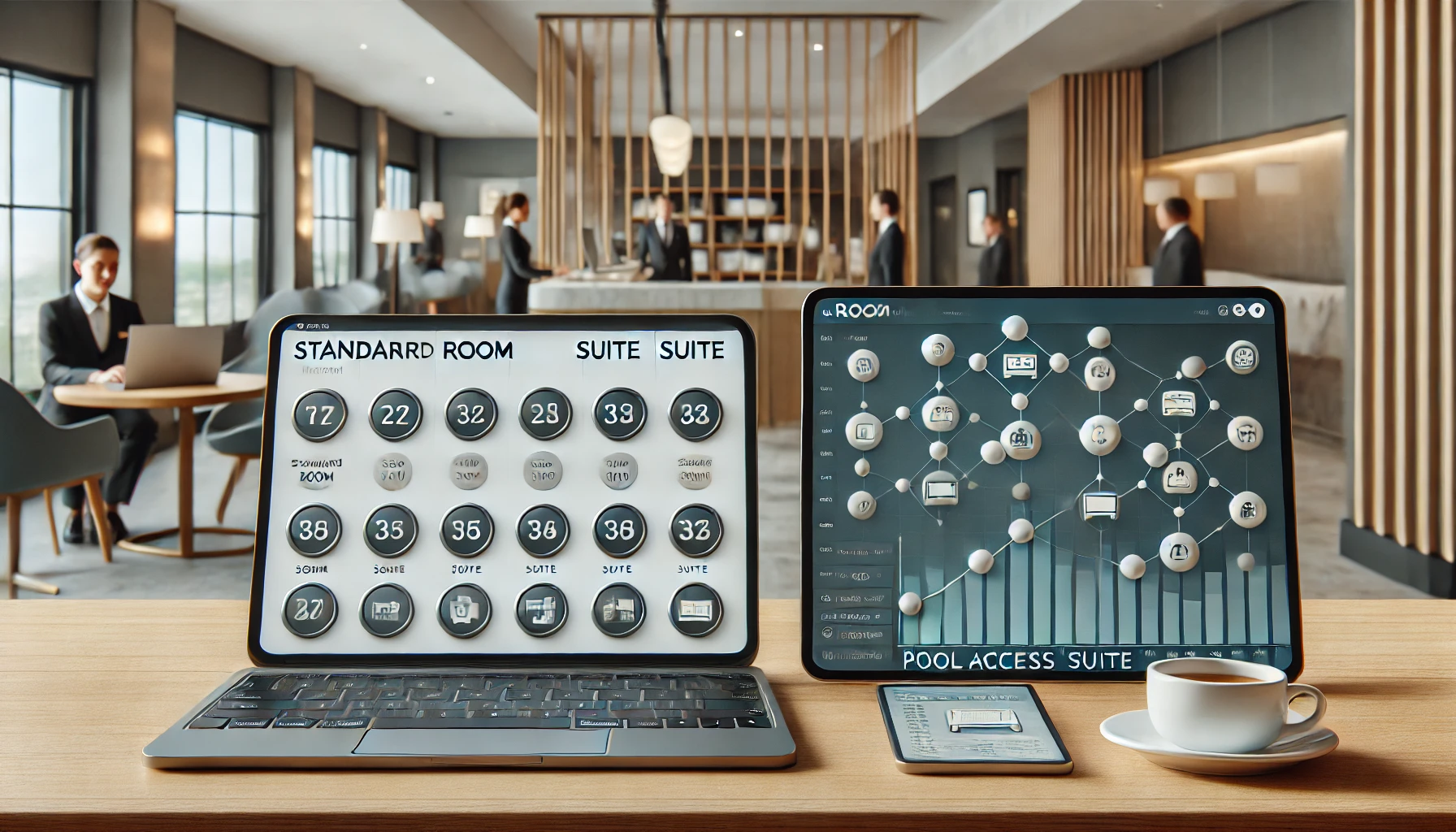Optimizing Room Types for Revenue Growth: How Simplification Can Boost Your Hotel’s Profitability

One of the most effective, no-cost strategies for driving higher profitability in hotels is room type optimization. In many cases, having too many room types can make it difficult to sell out rooms, even if your property is small, with only 17 rooms. A bloated room type inventory can confuse guests, complicate booking decisions, and ultimately reduce both occupancy and average daily rate (ADR). Simplifying your room offerings through restructuring can improve visibility and increase demand for your premium options, leading to stronger financial performance.
The Case for Room Type Reduction
Recent analysis has shown that reducing and reorganizing room types not only increases visibility across online platforms but also drives higher revenue per available room (RevPAR) and occupancy rates. Here’s why:
- Simpler Choices Drive Conversions: Guests often prefer fewer choices when booking online. Most bookings are concentrated in the top three to five room categories. When you present too many options, you risk decision paralysis, which can lead to potential guests abandoning the booking process altogether.
- Boosting Demand for Premium Room Types: When room types are streamlined, premium categories (like suites with special amenities) become more prominent, driving demand for higher-tier options. If the guest sees a clear upgrade path and understands the value, they are more likely to select higher-priced rooms.
- Longer Booking Windows: Fewer room types with more inventory per category allow for longer booking windows. This increases availability and reduces the need to block rooms prematurely due to limited stock, helping you capture last-minute bookings that would otherwise be lost.
Questions to Ask Yourself Before Restructuring Room Types
To ensure room type restructuring aligns with your property’s specific goals and market conditions, ask yourself these key questions:
- Where is booking demand currently concentrated? Review historical data to understand which room types are performing the best. Do most of your guests book the same three to five room categories?
- What room features do guests value most? Are certain amenities driving more bookings, such as pool access, balconies, or ocean views? Focus on these elements in your premium categories.
- Can you reduce the number of room types without losing key selling points? For example, could you combine similar room types with minor differences (e.g., different floors) into one category to simplify choices for guests?
- Are your current room categories limiting your ability to maximize inventory? Does having too many distinct room types leave some categories under-booked while others sell out quickly?
- How will this change impact your operations? Ensure that the reduction in room types will help streamline your operations, from room allocation to guest satisfaction, without adding complexity to your teams.
Implementation Considerations for Channel Managers, PMS, and OTAs
When restructuring room types, it’s crucial to ensure a smooth transition across your distribution channels. Here’s what you need to account for:
- Channel Manager Adjustments: Make sure your channel manager is updated with the new room types to reflect the change across all online travel agents (OTAs) and your booking engine. This ensures consistent pricing and availability across platforms.
- PMS Integration: Work closely with your Property Management System (PMS) provider to update room configurations. Renaming and restructuring room types in the PMS will also impact reporting and housekeeping operations, so ensure that these workflows are updated accordingly.
- Booking Engine Updates: Your booking engine must also reflect the new room types. Ensure that new room descriptions are optimized for online visibility, focusing on highlighting features that drive booking decisions (e.g., “Suite with Pool Access”).
- OTA Communication: Communicate the change to OTAs well in advance. Consistency across all channels is critical for avoiding discrepancies in room availability, pricing, and descriptions.
Streamlining Operations and Enhancing Guest Satisfaction
Optimizing room types doesn’t just impact revenue—it can significantly enhance operational efficiency and guest experience:
- Easier Room Allocation: Fewer room types mean your front office team can allocate rooms more effectively, reducing the risk of overbooking or last-minute changes that frustrate guests.
- Improved Inventory Management: For the commercial and reservations team, managing fewer room types reduces the complexity of tracking availability, ensuring you maximize room sales without blocking unnecessary inventory.
- Fewer Guest Complaints: Streamlining room types also makes the booking process more transparent for guests. Clear descriptions and fewer categories can minimize the potential for complaints related to room differences or mismatches in expectations.
The Path Forward
Room type restructuring is not only a no-cost optimization tactic, but it can also have a transformative impact on both your topline revenue and guest satisfaction. By simplifying your offerings, aligning them with guest preferences, and ensuring seamless implementation across your systems, you can drive occupancy, boost ADR, and position your property for higher profitability.
As you plan for this transition, remember to stay data-driven—use your PMS to analyze past performance and test changes gradually to ensure the impact is positive. With the right strategy, room type optimization can unlock hidden revenue potential in even the smallest properties.
As a hotel consultant and creator of Inevitable Hotel Success Mentoring Programme with All-Access Pass to my personally, to the the comprehensive training and implementation material, I help hoteliers master strategies like these to achieve greater profitability. My program provides a proven roadmap to success, from demand forecasting to revenue optimization.
By focusing on smart revenue strategies and operational efficiencies, I’ve helped hotels like yours streamline processes, optimize room types, and maximize revenue potential.
For example, one of my recent clients, a boutique hotel with 26 rooms in a European city, reached their 2024 budget as early as August, achieving a 4.4X ROI—generating 20,000 € by investing just 4,500 € in working with me.
Another small boutique hotel (16 rooms) in a spa city saw similar success. After investing 4,500 €, they achieved around 25,000 € in returns during the first year by adopting dynamic pricing and revenue management strategies. By the second year, they generated additional room revenue based on the skills and insights gained through our weekly mentoring sessions, further boosting profitability.
Reach to me if you want to achieve the same!








